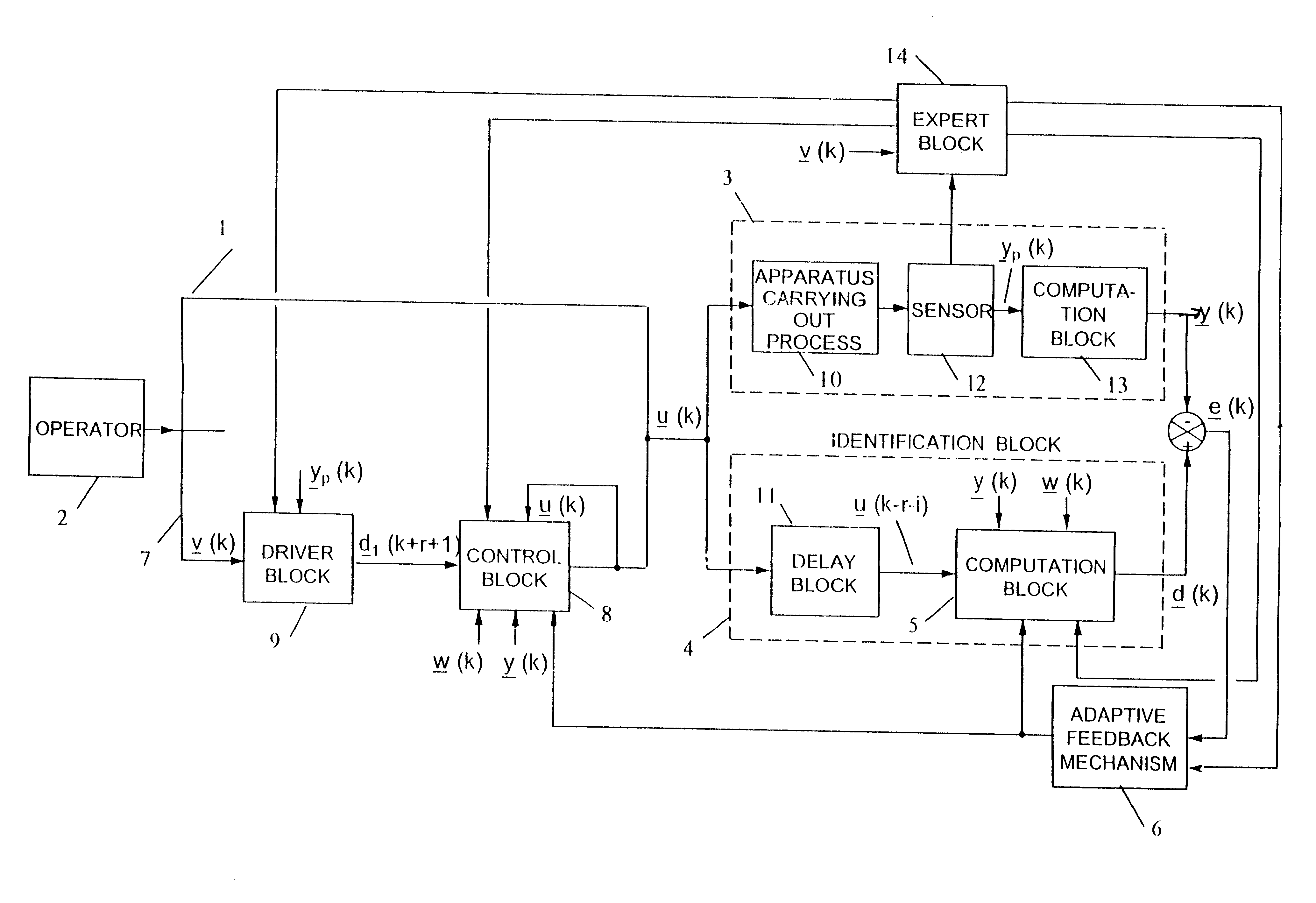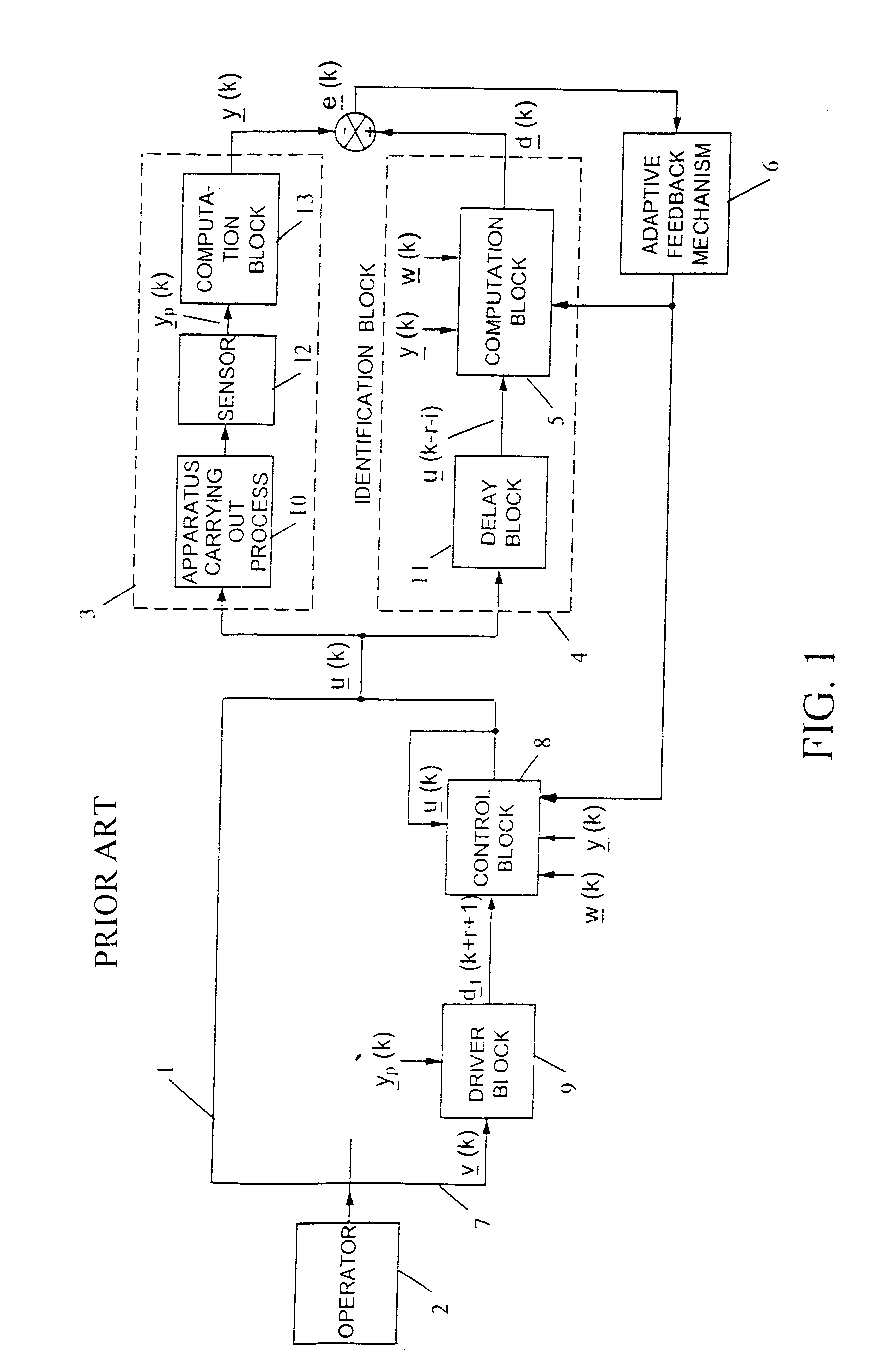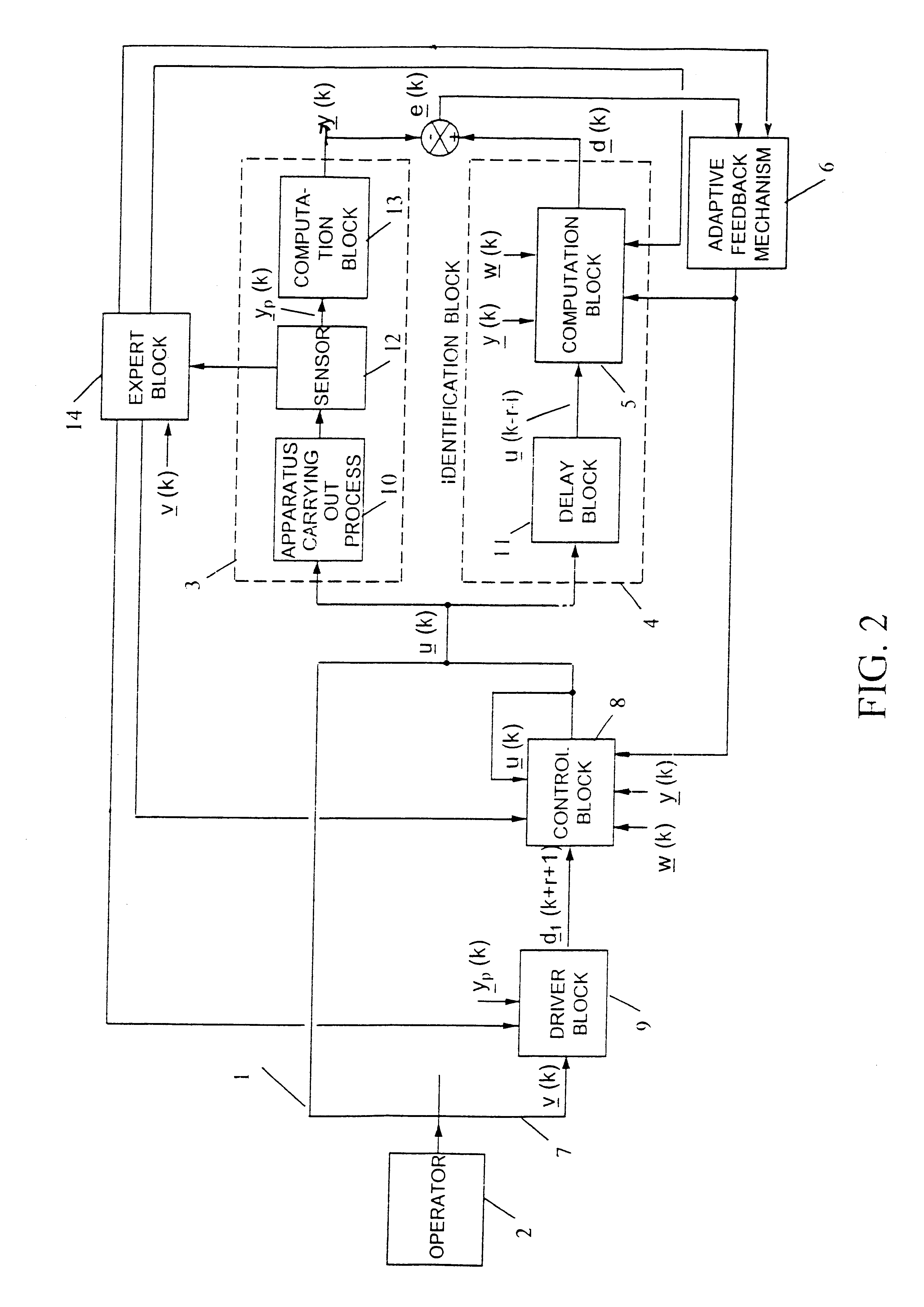Adaptive predictive expert control system
a control system and expert technology, applied in adaptive control, sampled-variable control systems, instruments, etc., can solve the problems of inability to operate control systems in stable conditions, less reliable robustness and stability, and above mentioned drift in ap model parameters
- Summary
- Abstract
- Description
- Claims
- Application Information
AI Technical Summary
Benefits of technology
Problems solved by technology
Method used
Image
Examples
Embodiment Construction
The adaptive predictive expert control system, previously described, has been implemented for the control of a simulated pH process, as described in the following.
A pH process typically mixes a flow of an acid solution with a flow of a base solution and tries to control the resultant pH of the mix by manipulating the flow rate of the base solution. This pH control has been for many years an example of control difficulties in nonlinear chemical processes. The main difficulty comes from the fact that the gain of the process changes drastically (increases) when the pH value of the mix enters in a region around the value of 7. The pH set point is usually in this region.
The simulated pH process considers that the dynamic relationship between the incremental pH of the mix at instant k, .DELTA.pH(k), and the incremental percentage of flow rate of the base solution, u(k), is described, when the absolute value of the pH of the mix is lower than 4.4 or bigger than 9.6, by the following equati...
PUM
 Login to View More
Login to View More Abstract
Description
Claims
Application Information
 Login to View More
Login to View More - R&D
- Intellectual Property
- Life Sciences
- Materials
- Tech Scout
- Unparalleled Data Quality
- Higher Quality Content
- 60% Fewer Hallucinations
Browse by: Latest US Patents, China's latest patents, Technical Efficacy Thesaurus, Application Domain, Technology Topic, Popular Technical Reports.
© 2025 PatSnap. All rights reserved.Legal|Privacy policy|Modern Slavery Act Transparency Statement|Sitemap|About US| Contact US: help@patsnap.com



